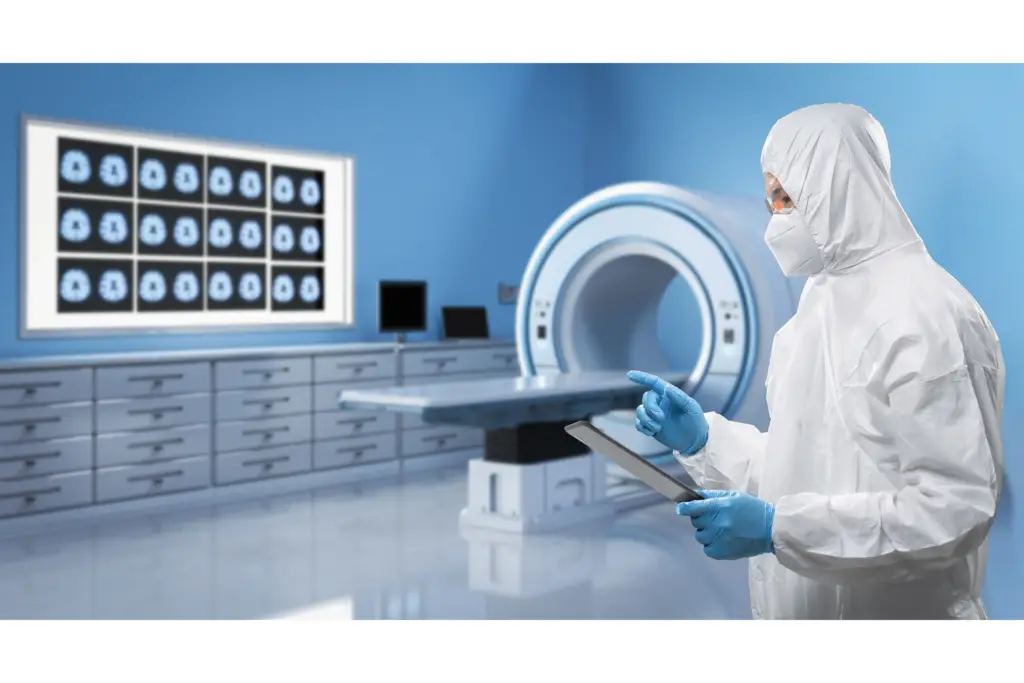The world of medical imaging is undergoing a significant transformation with the rapid integration of artificial intelligence (AI). While radiologic technology has advanced considerably over the years, AI promises to revolutionize the field by enhancing efficiency, accuracy, and accessibility of diagnosis. This article explores the various ways AI is impacting radiologic technology, both for radiologists and radiologic technologists, while also addressing the ethical concerns and uncertainties that accompany this evolution.
Enhanced Efficiency and Accuracy:
One of the most prominent impacts of AI in radiology is its ability to automate time-consuming tasks, freeing up radiologists for more complex interpretations. Algorithms can analyze vast amounts of imaging data with remarkable speed and accuracy, identifying subtle abnormalities that might be missed by the human eye. This reduces turnaround times for reports, allowing for quicker diagnosis and treatment initiation.
AI algorithms are particularly adept at detecting specific pathologies. In mammography, for instance, AI can outperform radiologists in identifying breast cancer, potentially reducing misdiagnosis rates. Similarly, AI-powered systems can automatically detect fractures, aneurysms, and other critical findings in various radiological examinations, improving overall diagnostic accuracy.
Personalized Medicine and Precision Diagnostics:
AI is empowering radiologists to move beyond traditional diagnosis by facilitating personalized medicine approaches. Advanced algorithms can analyze a patient’s unique medical history, genetic information, and other relevant data alongside their imaging scans. This comprehensive picture enables radiologists to make more informed diagnoses and tailor treatment plans to individual needs.
Furthermore, AI can support precision diagnostics by identifying specific features of diseases. For example, AI-powered systems can differentiate various cancer subtypes, guiding therapy towards the most effective treatment options for each patient. This level of precision holds immense potential for improving patient outcomes and reducing unnecessary interventions.
Improved Workflow and Accessibility:
AI is reshaping radiologists’ workflows by offering intelligent decision support tools. These tools can prioritize urgent cases, flag critical findings, and even suggest differential diagnoses, ultimately assisting radiologists in making complex decisions more efficiently. This not only enhances workflow but also reduces burnout, a significant concern in the radiology profession.
AI is also playing a crucial role in expanding access to quality diagnostic care, particularly in resource-limited settings. AI-powered systems can analyze medical images remotely, facilitating diagnosis in areas with limited radiology expertise. This technology holds immense promise for bridging the gap in healthcare access, especially in underserved communities.

Impact on Radiologic Technologists:
While AI might lead to automation of some routine tasks, it should not be seen as a threat to radiologic technologists. Instead, AI is likely to create new opportunities for them. Radiologic technologists will be required to develop new skillsets, such as working with AI-powered systems, understanding their limitations, and ensuring data quality for optimal algorithms performance.
Additionally, AI can assist radiologic technologists by automatically optimizing scanning protocols, minimizing radiation exposure to patients, and expediting patient flow. This allows technologists to focus on higher-level tasks like patient care and education, ultimately enhancing their role in the diagnostic process.
Ethical Considerations and Uncertainties:
The integration of AI in radiology brings ethical concerns regarding data privacy, transparency, and accountability. Ensuring patient data security and anonymity is crucial, as any breach could have severe consequences. Furthermore, the “black box” nature of some AI algorithms raises concerns about transparency and explainability of their decisions. Addressing these concerns through responsible development, implementation, and ongoing evaluation is essential to ensure ethical and trustworthy use of AI in radiology.
Another uncertainty lies in the potential job displacement of radiologists and radiologic technologists. While certain routine tasks might become automated, the human expertise and critical thinking skills of radiologists will remain irreplaceable. The focus should shift towards integrating AI with human expertise, creating a synergistic partnership that leverages the strengths of both for optimal patient care.
Conclusion:
Artificial intelligence is undoubtedly transforming the landscape of radiologic technology, bringing exciting possibilities for improved efficiency, accuracy, and accessibility of diagnosis.
As we move forward, it is clear that AI will play a pivotal role in shaping the future of radiology. By harnessing its potential responsibly and ensuring human oversight remains central, we can create a healthcare ecosystem that utilizes the best of both human and artificial intelligence, ultimately leading to better outcomes for patients worldwide.


